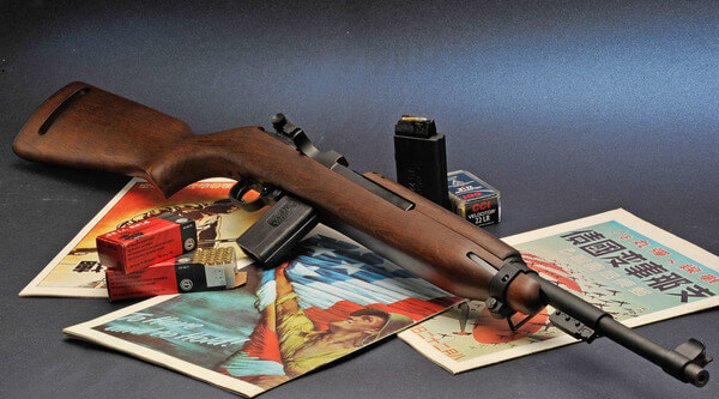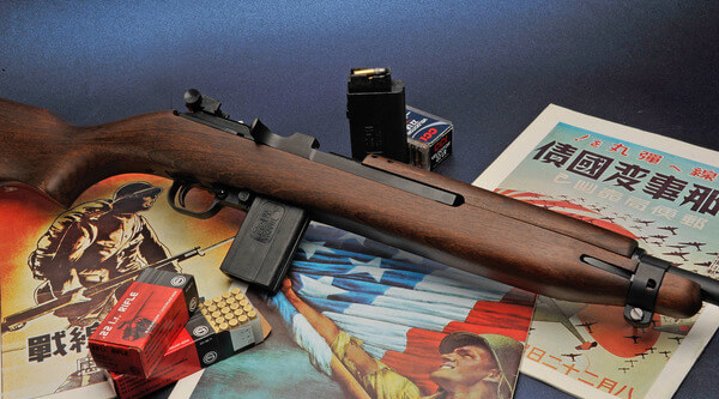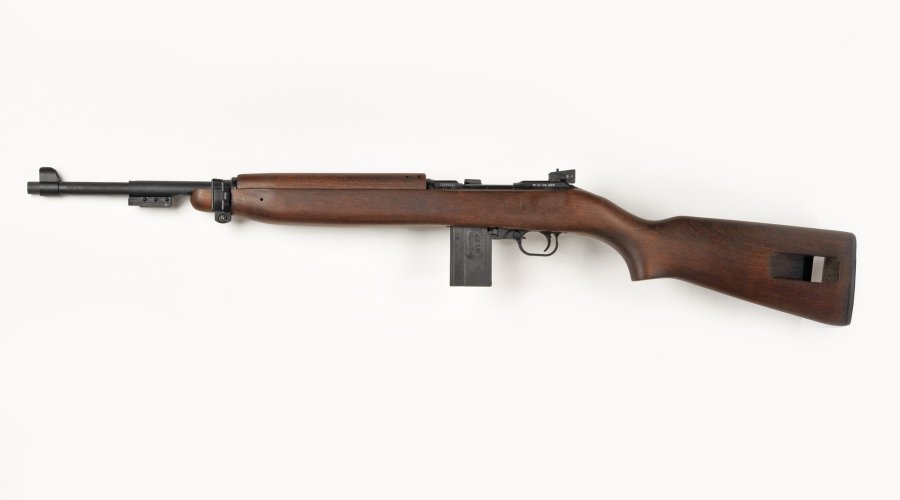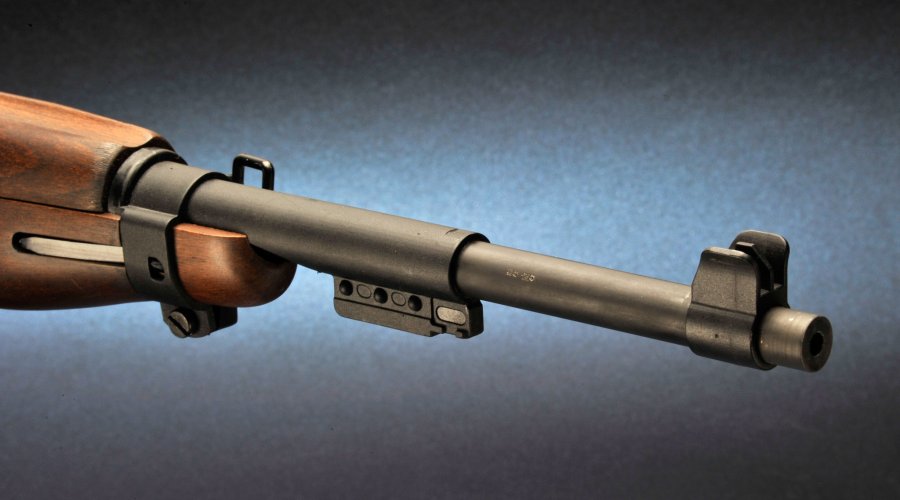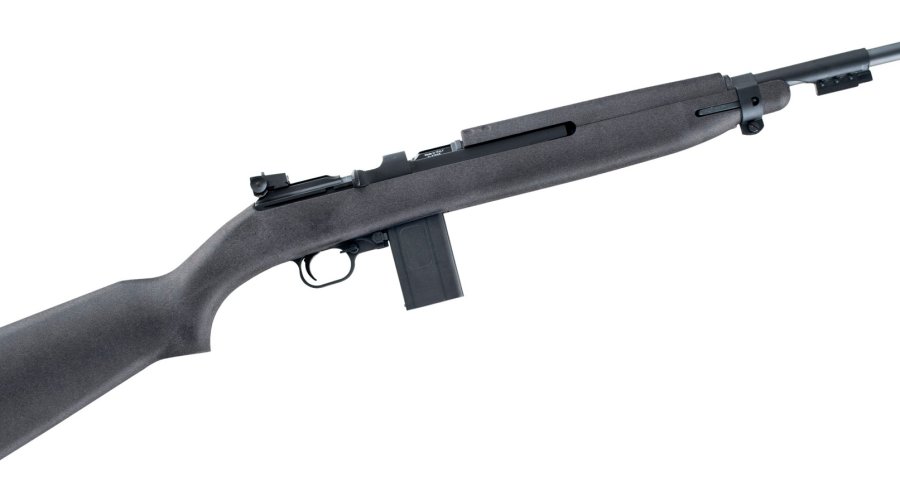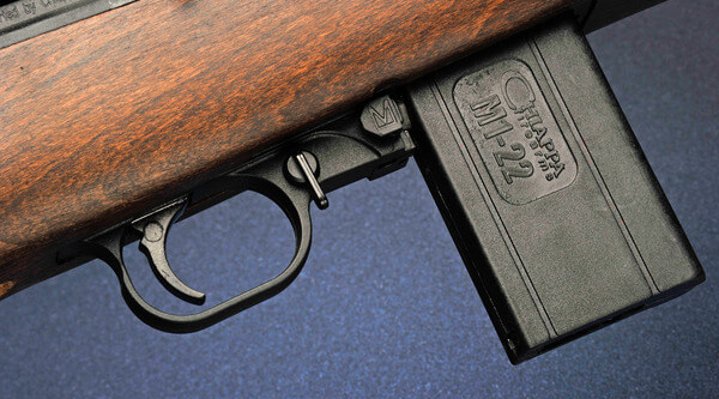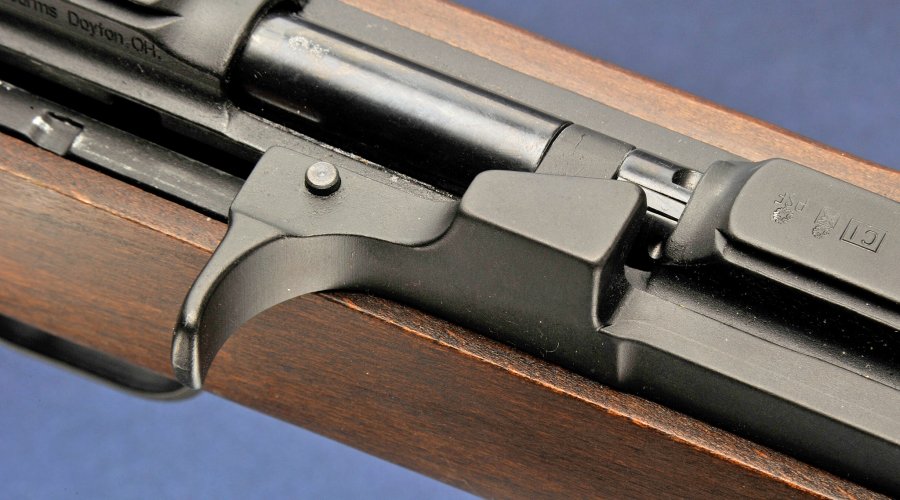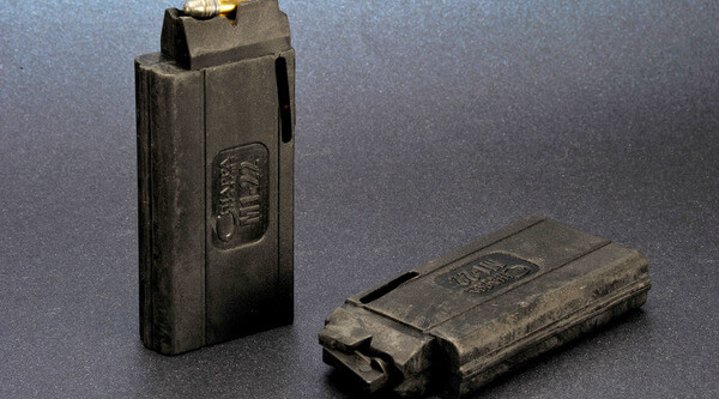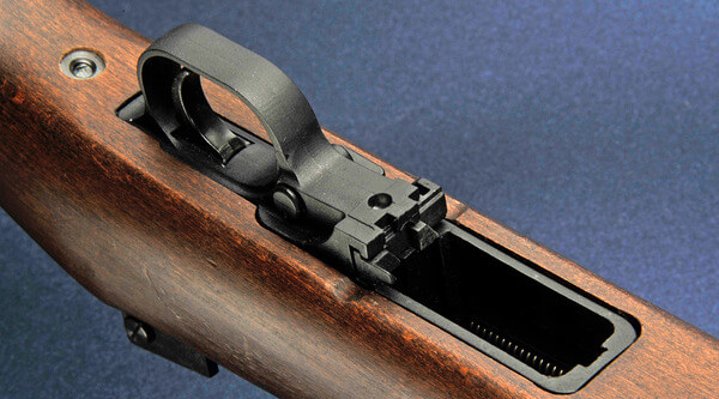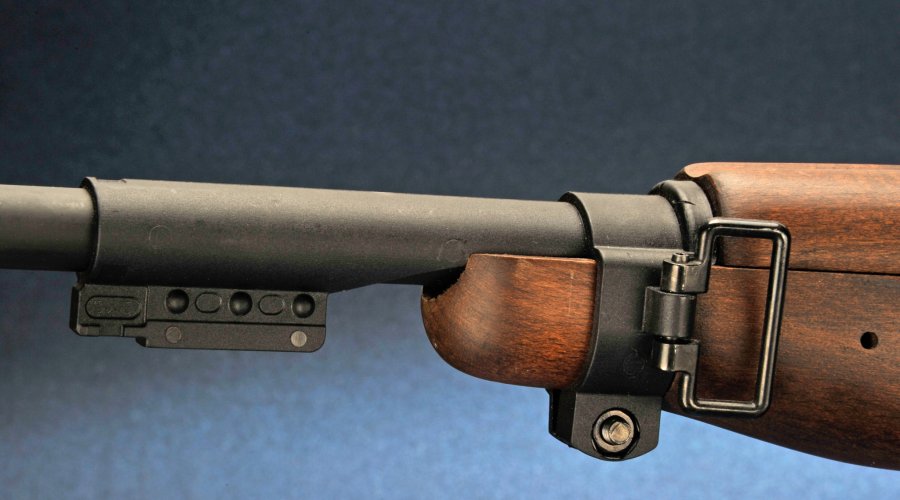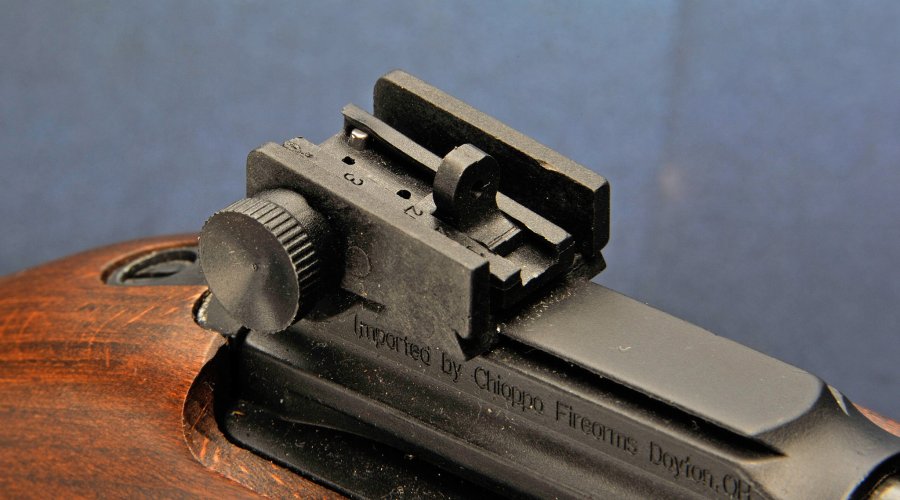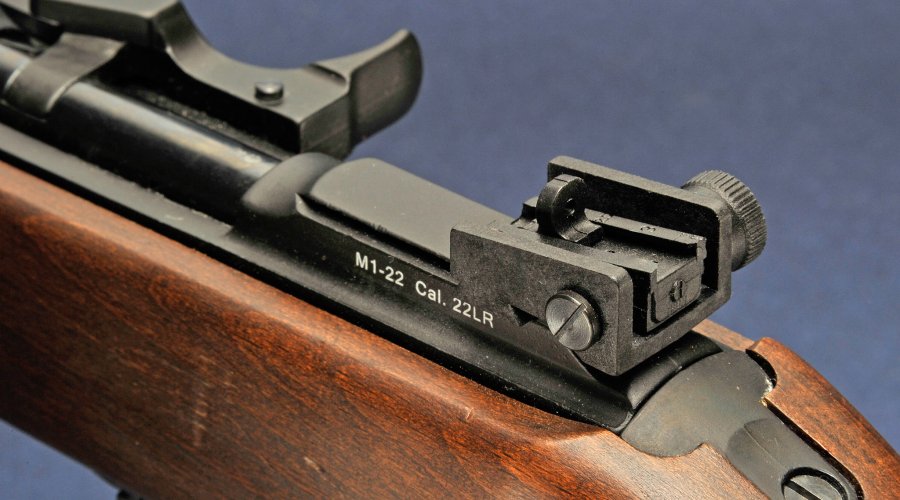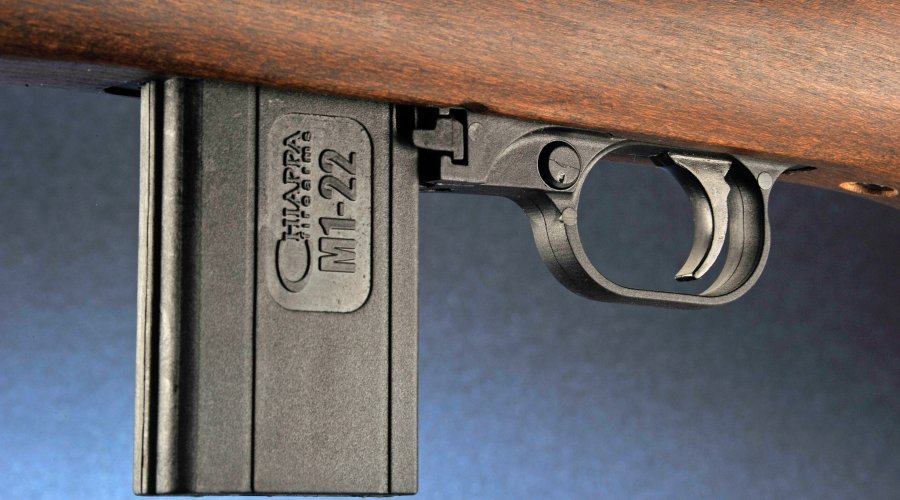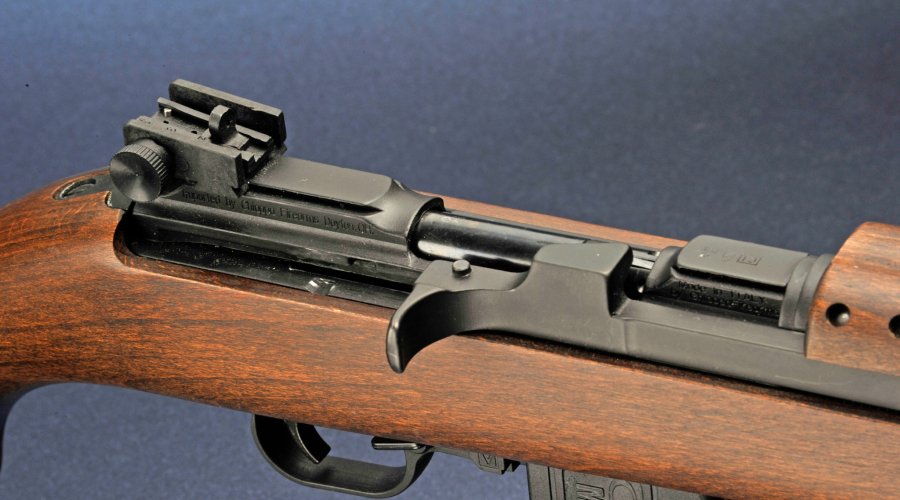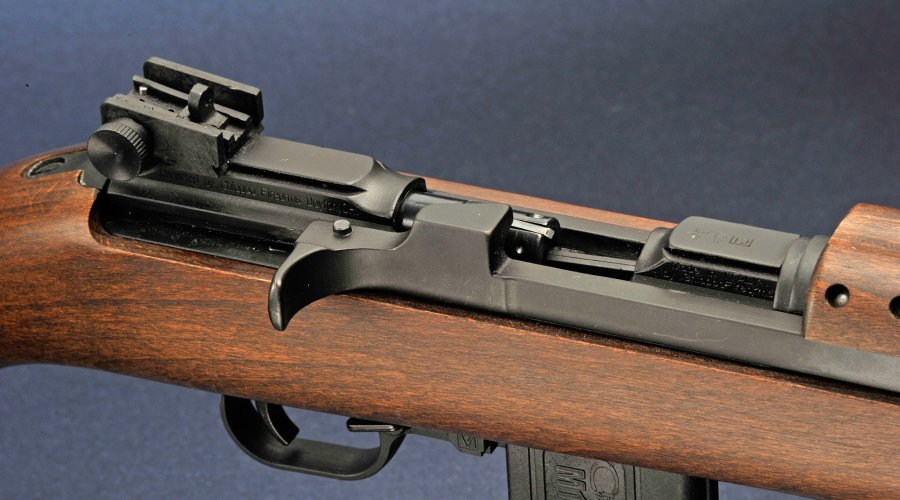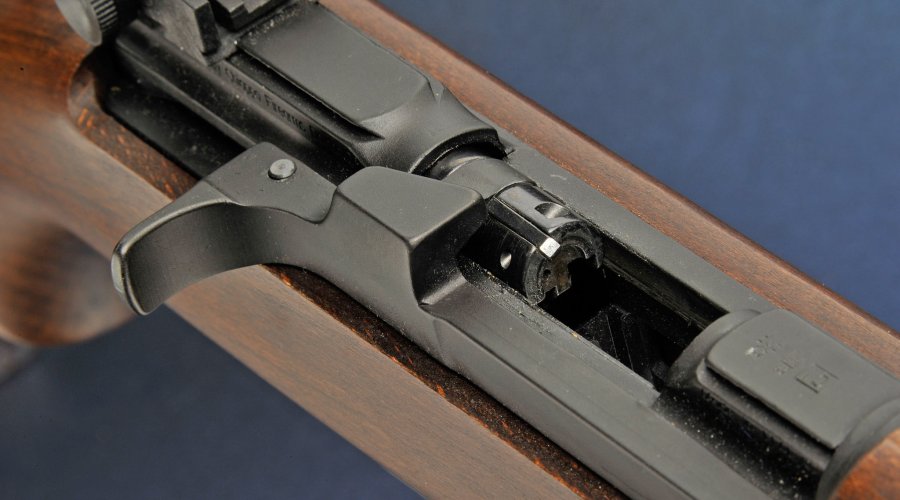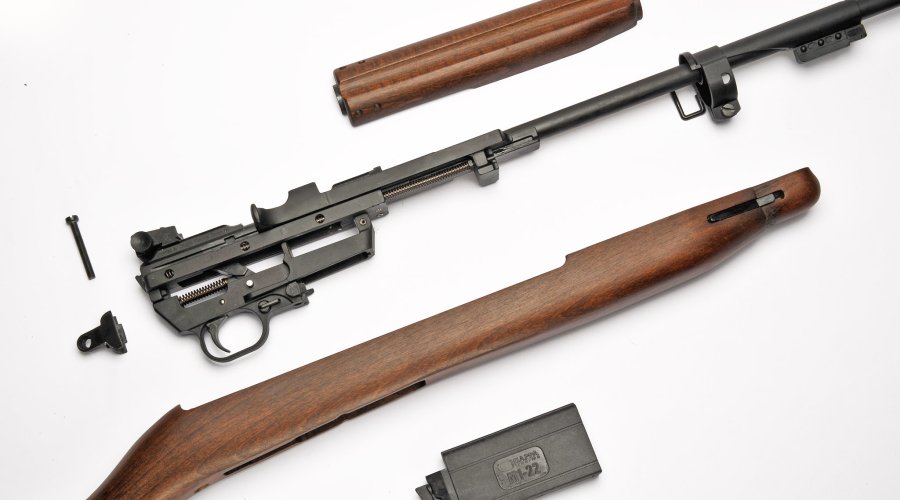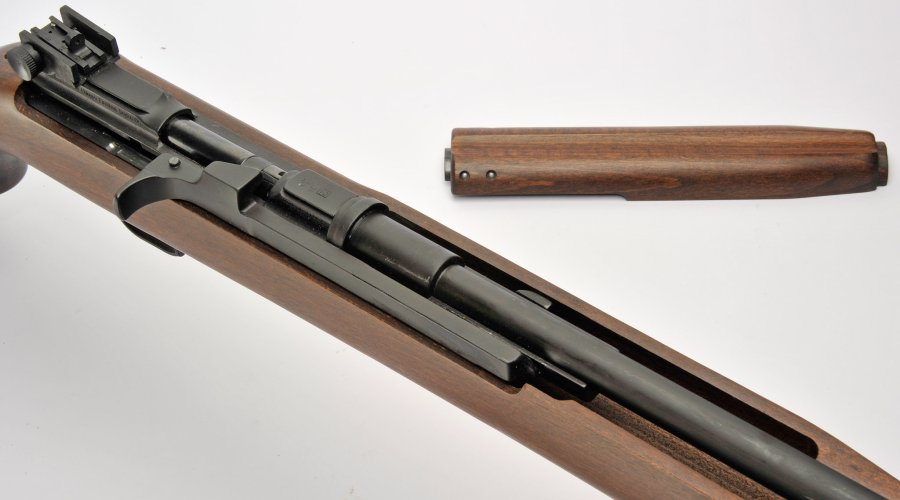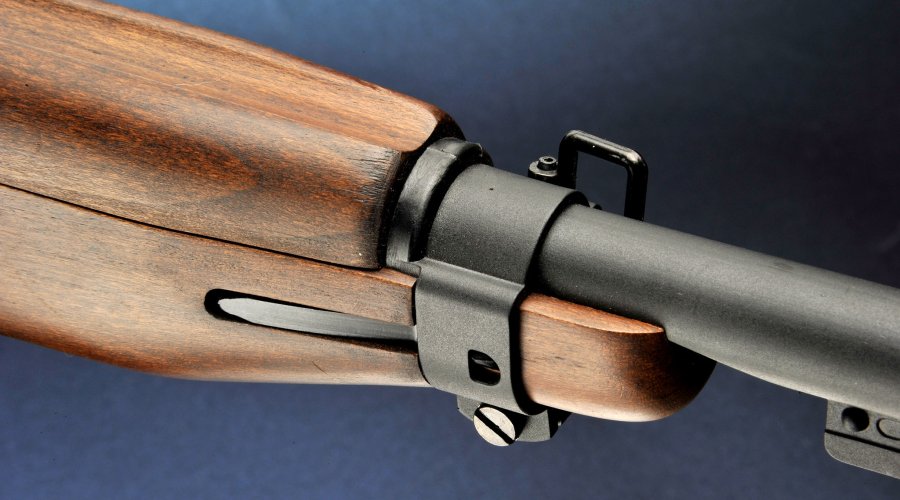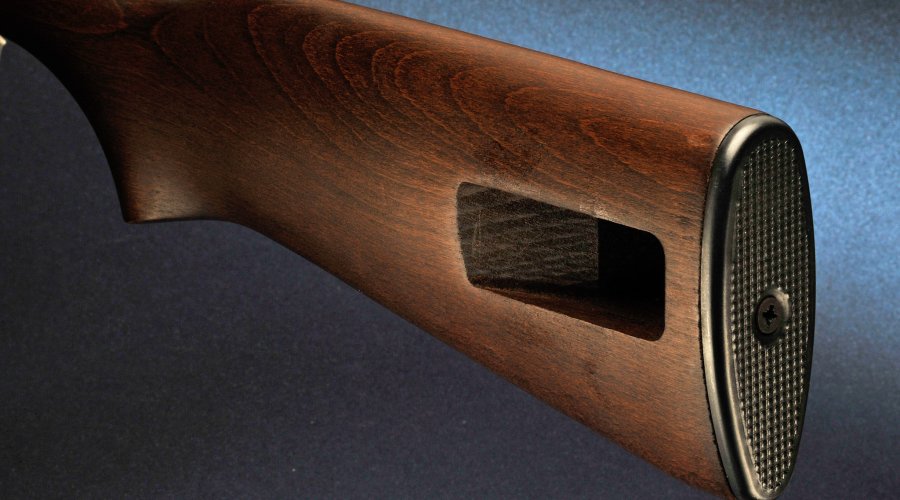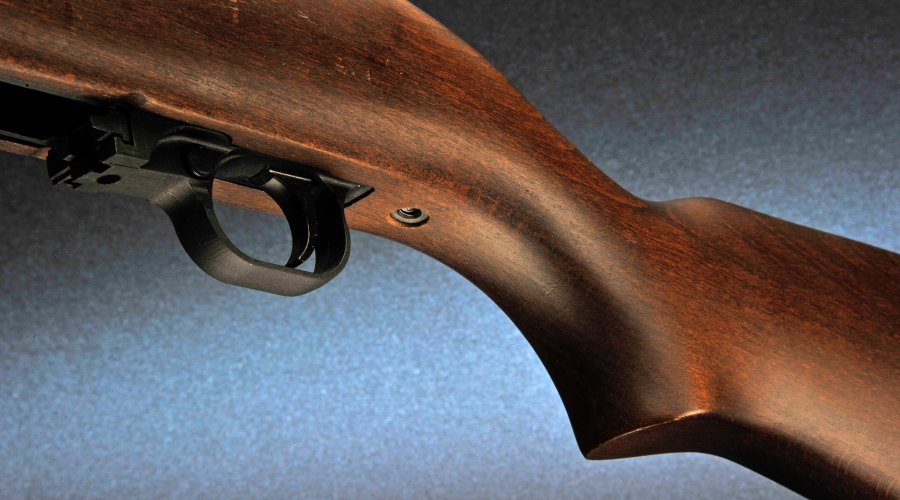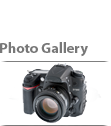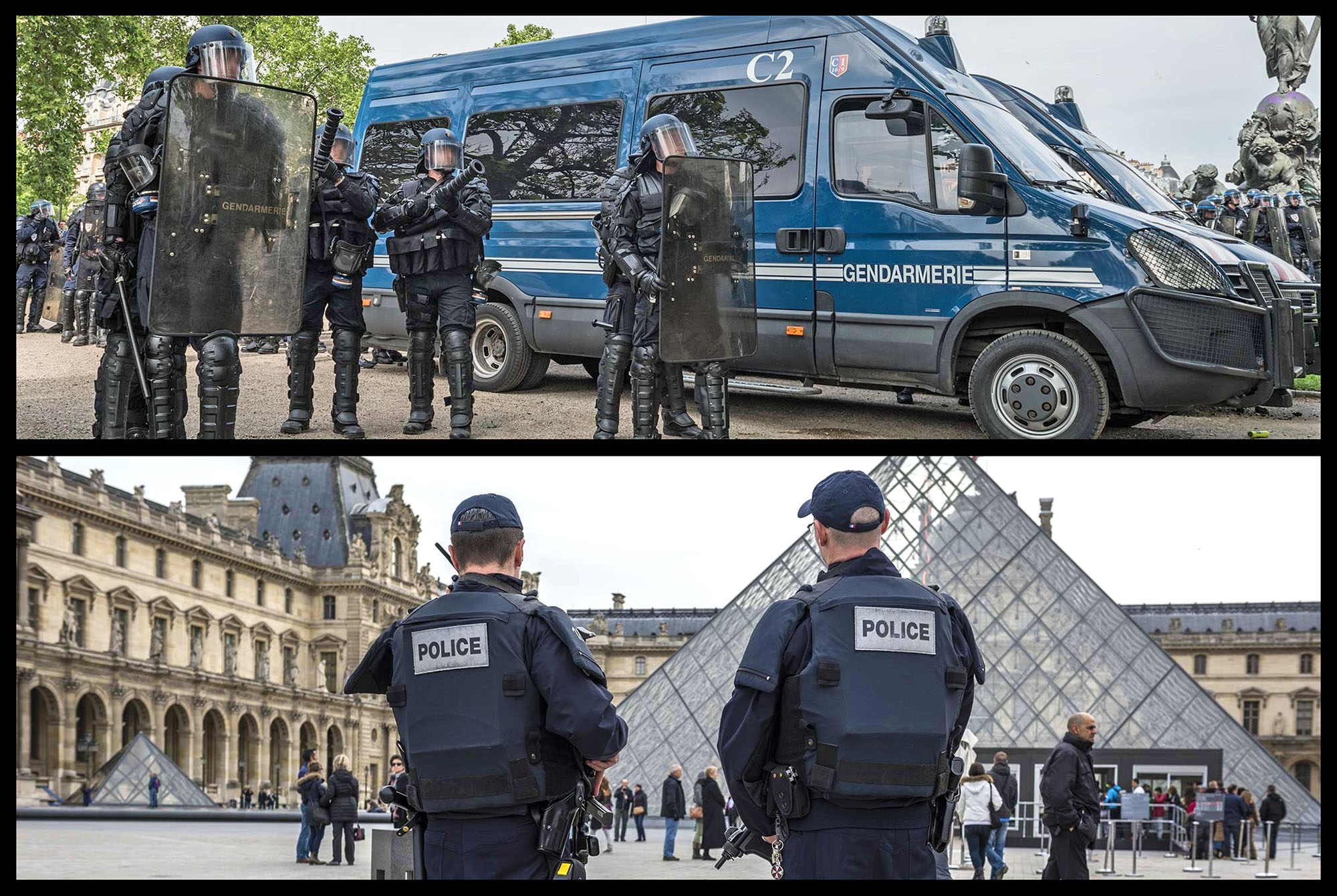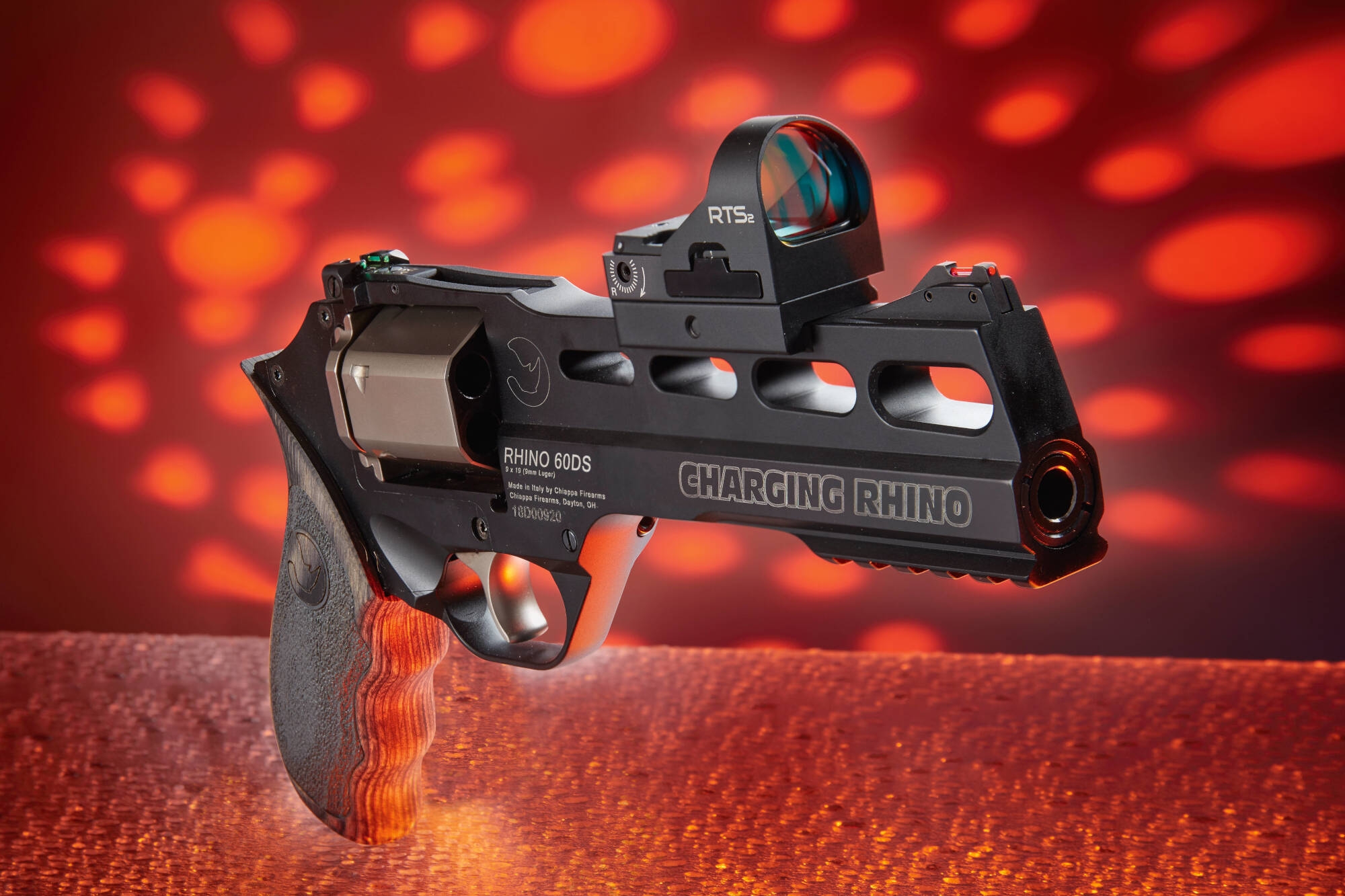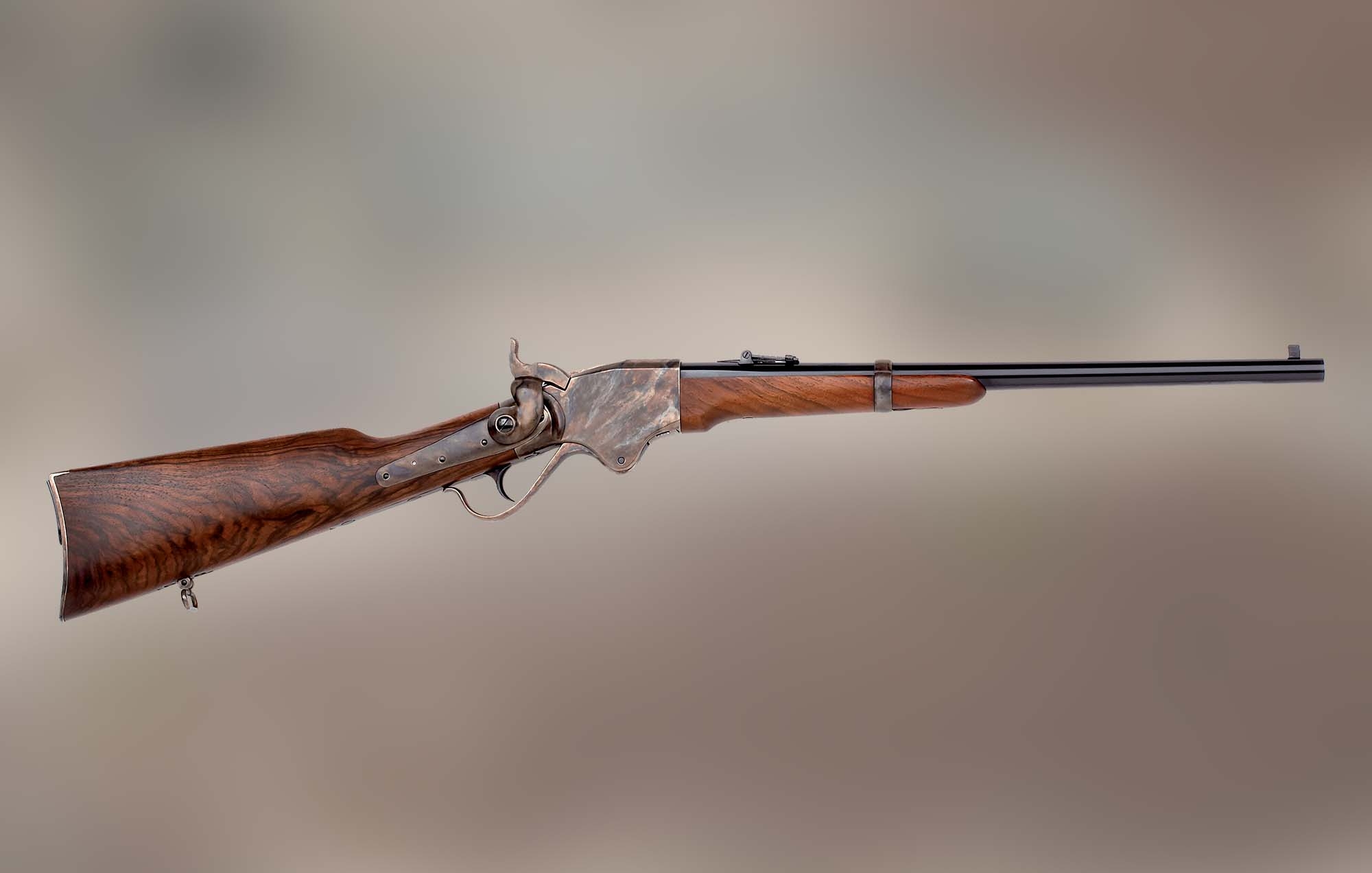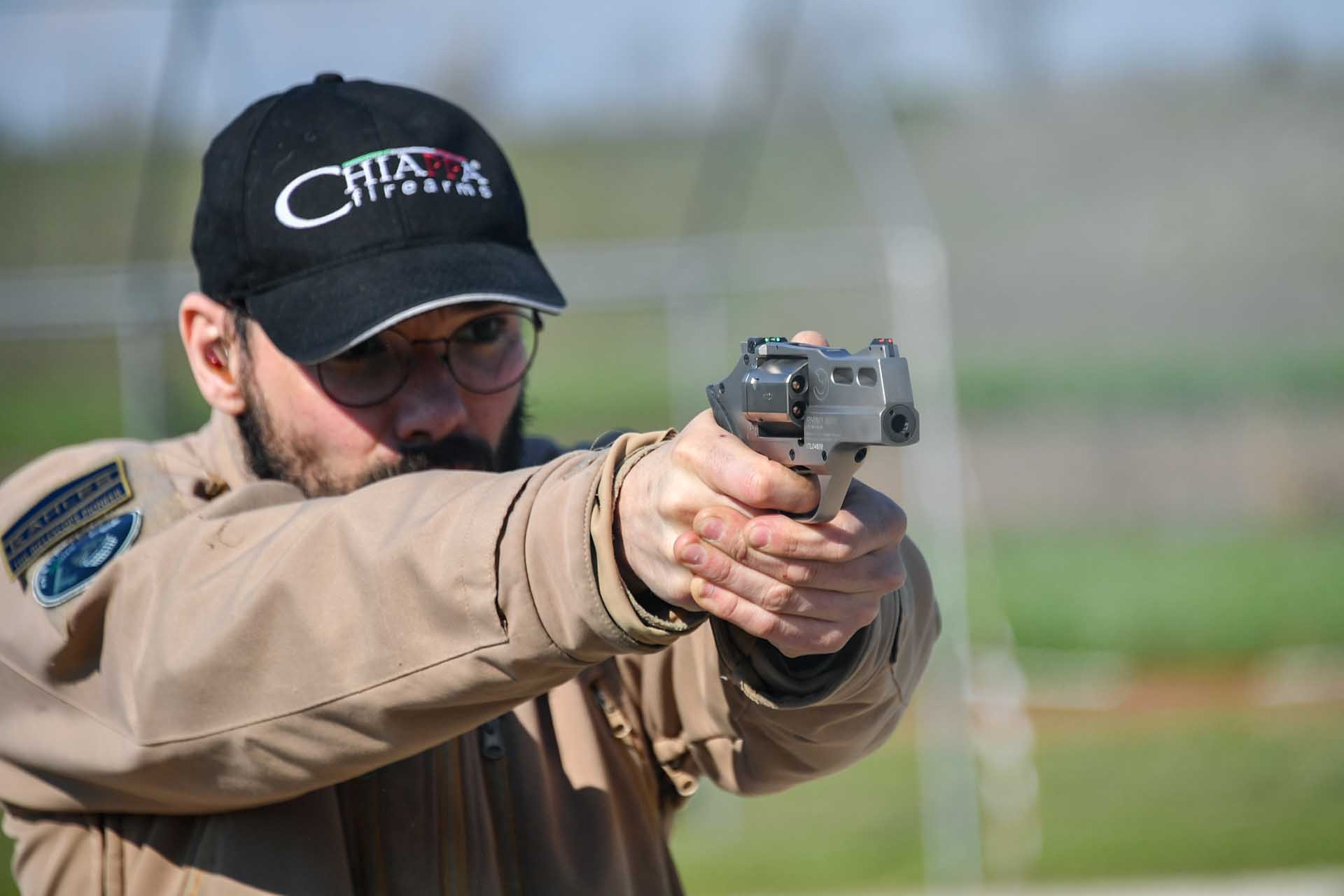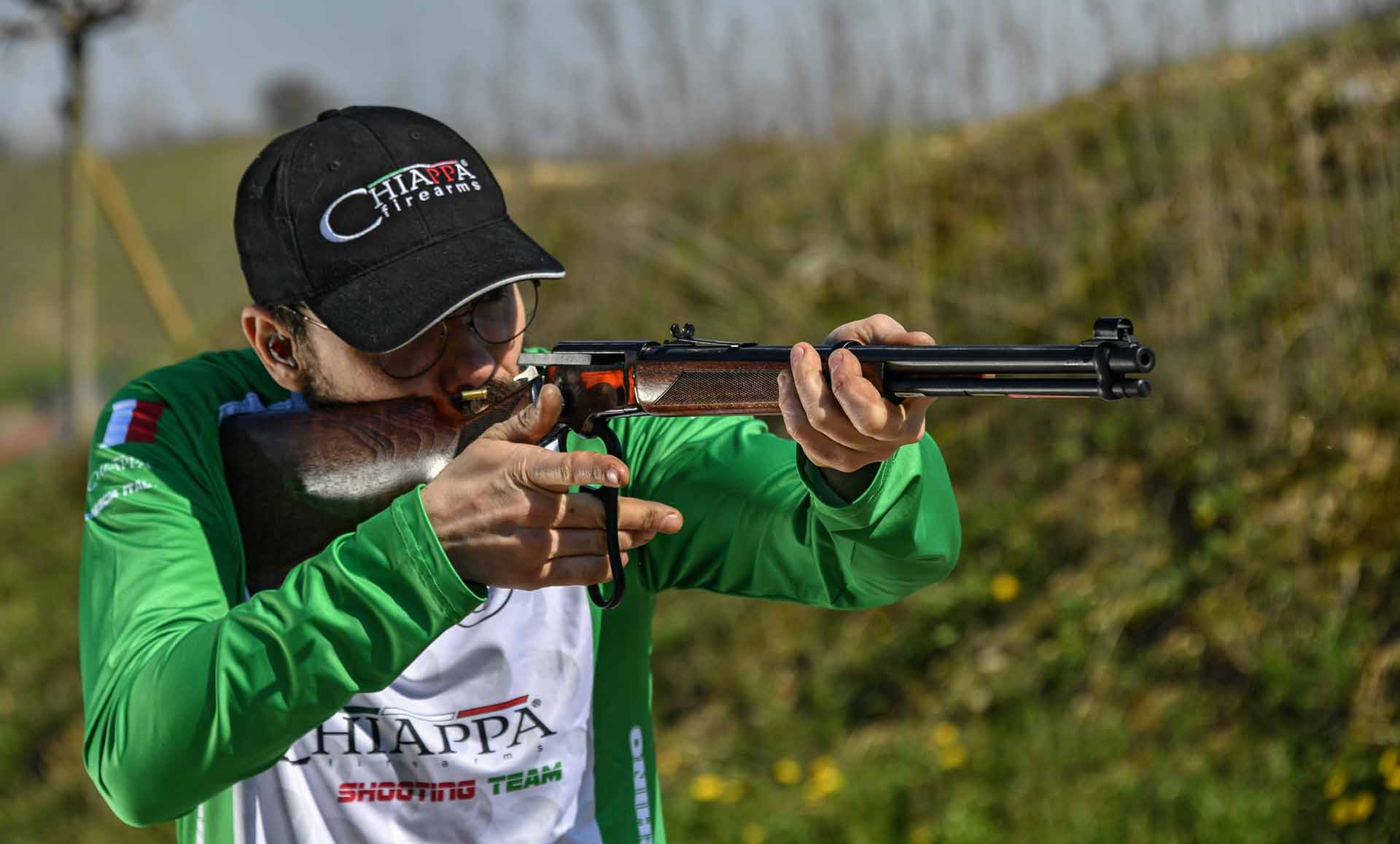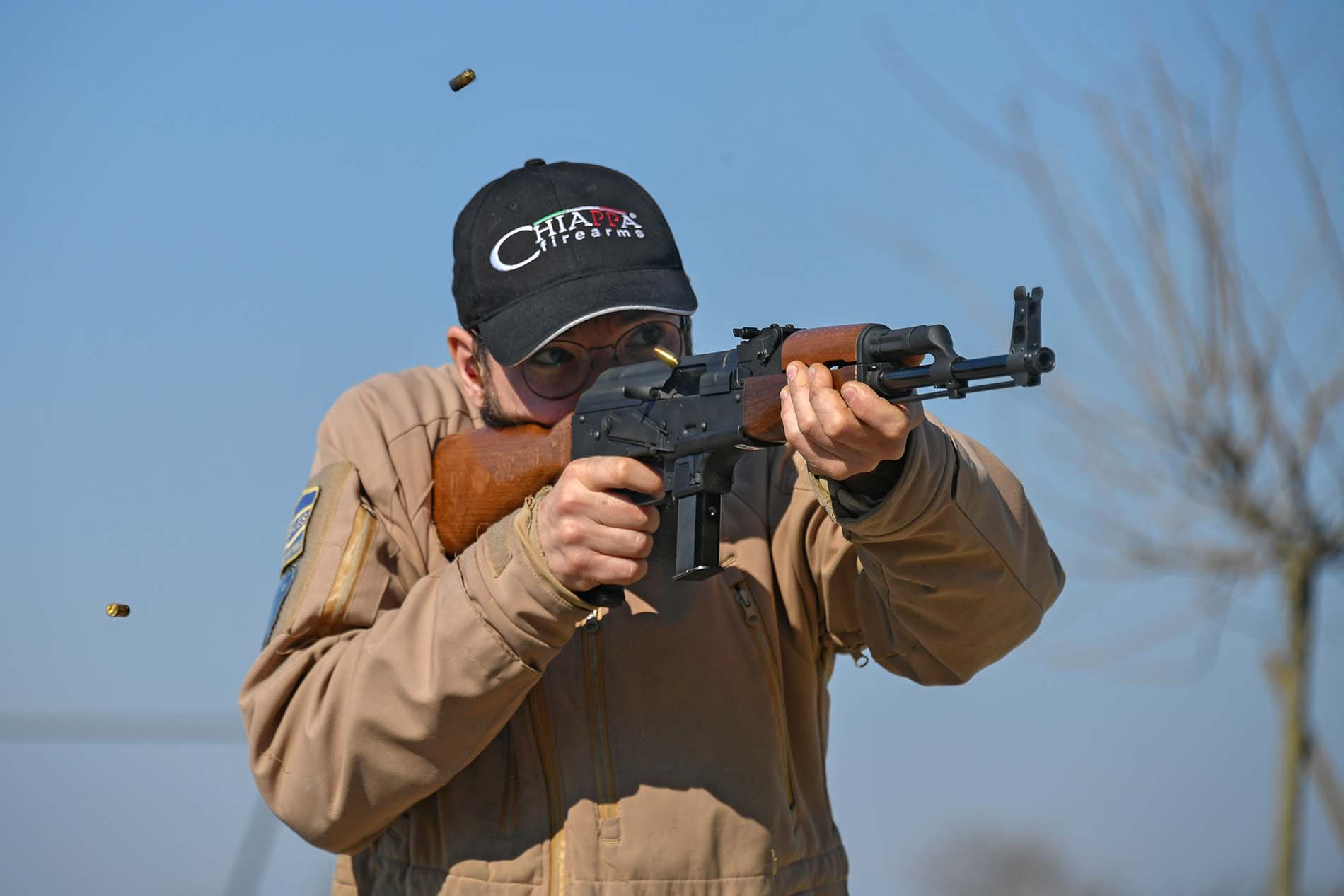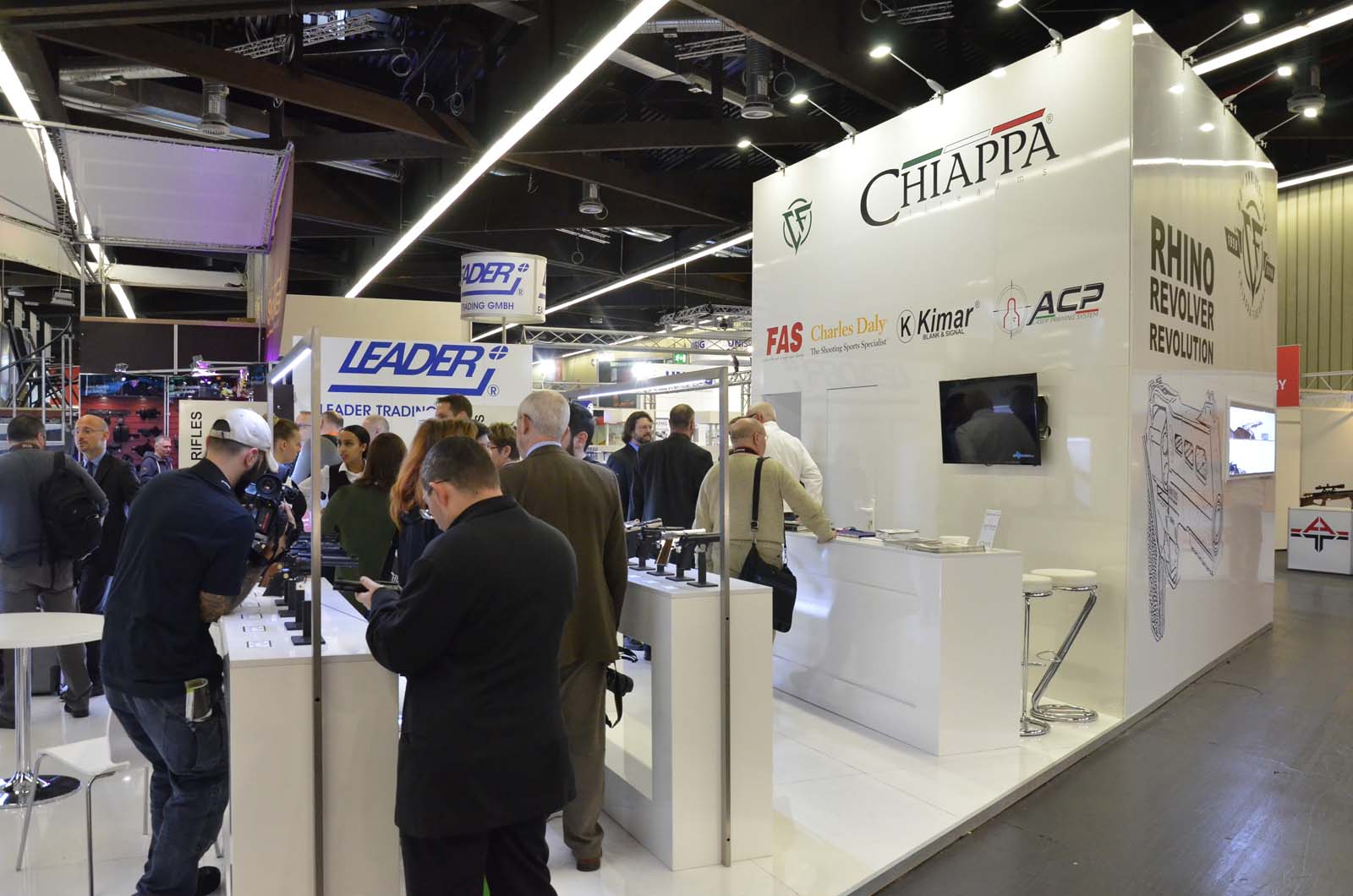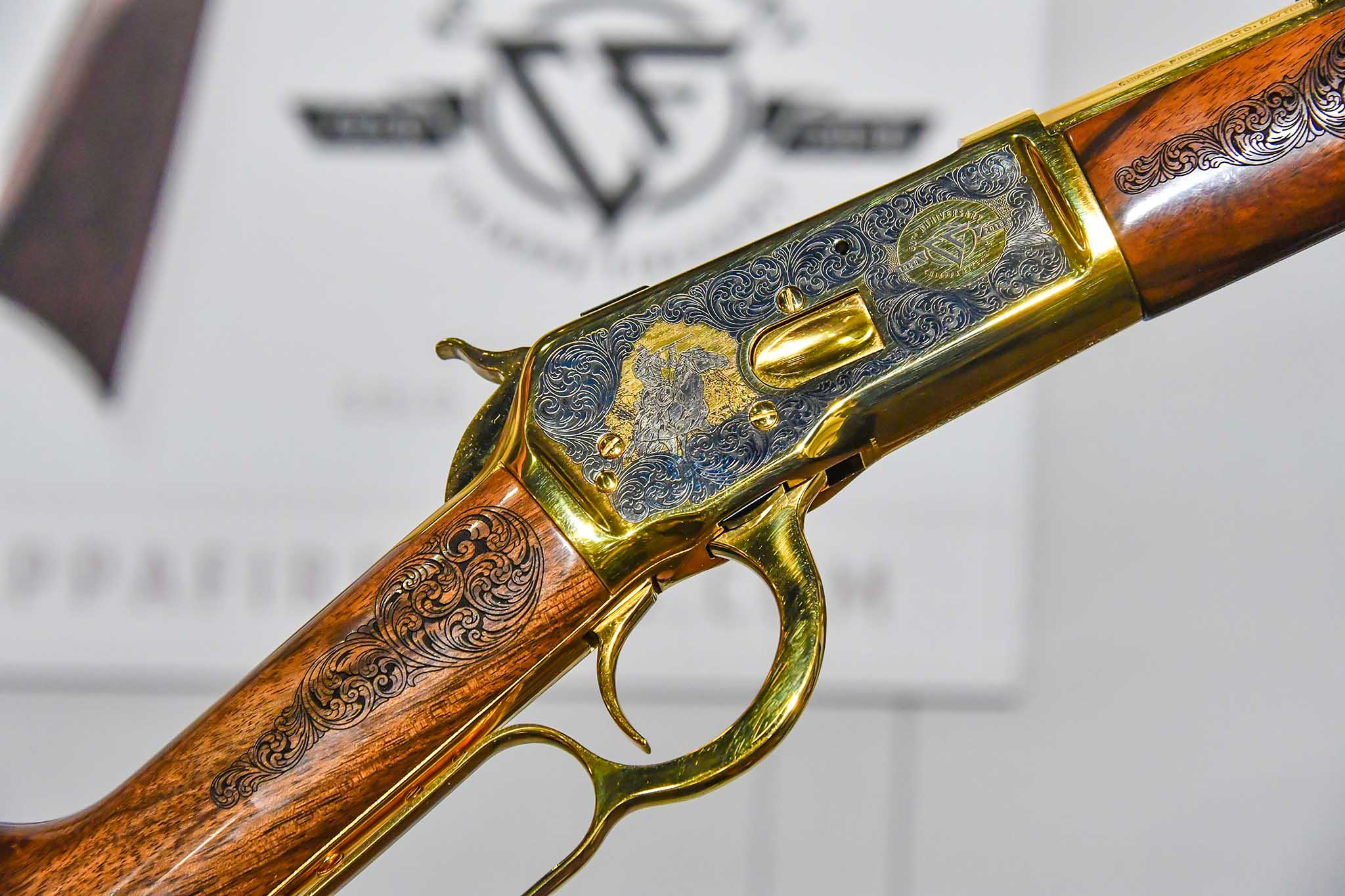The history of this gun design dates back to 1940, when the Ordnance Department of the U.S. Department of War (now the Department of Defense) approved a request from the commander general of U.S. infantry forces − dated back to 1938 − for the development of a "Light Rifle" to be fielded with rear-echelon and non-combatant personnel of the U.S. Army in the event of a large-scale wartime mobilization − an event that would have turned into reality just one year later, when the United States entered the World War II, siding with the British Empire and the Soviet Union against the Axis forces following the Japanese attack at the Pearl Harbor naval base in Hawaii.
The possibility for the United States to go into war at the side of the European allies had been in discussion for quite some time, now, and had faced strong oppisition from the American public opinion and many isolationist politicians; nonetheless, the high ranks of the U.S. Armed Forces looked at the future with a certain degree of worry, having observed the forces of the Nazi German Reich grow increasingly stronger following the Anschluss of Austria, the annexation of the Czechoslovakian, German-speaking region of the Sudets, and the invasion of Poland.
Particularly, the German Armed Forces had been demonstrated to perfectly master Blitzkrieg tactics, employing swift advances to break enemy front lines while airborne troops and paratroopers attacked the enemy from behind and engaged rear-echelon, support units to cut communication and supply routes.
The competition to adopt a new Light Rifle was launched in 1941; the new gun had to conform to certain canons, including featuring a greater range and stopping power if compared to the then-issued .45 ACP caliber side-arms (M1911 and M1911-A1 semi-automatic pistols, M1917 revolvers) and lower weight and dimensions in comparaison to the then-issued main infantry service arms − including the .30-06 caliber M1 Garand rifle, but particularly the .45 ACP Thompson sub-machineguns, whose role as an infantry weapon within the U.S. Armed Forces was out of discussion, albeit it had its limitations: it was largely uneffective over 50 metres ranges, it was too heavy for rear-echelon personnel, and it was too expensive to be built and issued by the numbers for said non-frontline troops.
At the end, the competition was won by a late entry: a design conceived by Winchester and based upon a Garand-style rotating bolt and proprietary short-stroke gas piston engineered by David Marshall Williams, an ex-convict that had mastered guncraftsmanship while serving a lenghy prison sentence for Prohibition-related crimes and the involvement in the death of a deputy Sheriff.
Winchester's new Light Rifle project was chambered for the .30-Carbine round, a 7.62x33mm intermediate caliber which would have been later renamed as .30-M1 and whose FMJRN 110gr ball could travel at around 600mps/1990fps when fired from 18" barrels. The new Winchester Light Rifle was cleared for large-scale production and adopted in October 1941 − only one month ahead from the attack that would have dragged the United States into war − as the U.S. Carbine, Caliber .30, M1.
Albeit originally conceived for rear-echelon personnel only, the M1 carbine proved very popular between non-infantry frontline units as well: it was issued to truck, tank and armored vehicle drivers and crewmembers, to mortar operators and artillery personnel, and a specially-stocked version, dubbed the M1A1, featuring a pistol grip and a side-folding metal wire stock, was issued to U.S. paratroops.
Later during the conflict, other versions of the M1 carbine design were developed; these included the M2 − coming either with a fixed stock or a paratrooper stock, issued with a curved 30-rounds magazine, and capable to fire in full-automatic mode at a cyclic rate of aroun 900 rounds per minute − and the M3, also dubbed the T3, which was capable of semi-automatic and full-automatic fire as well and was conceived to be equipped with one of the first night vision/night aiming devices ever, more specifically and primitive (and dangerous for the operator, due to the radiations level emitted by its infrared image intensifying device) known as the M3 or T3 device, and commonly nicknamed the "Snooperscope".
After World War II, the M1 carbine and its variants were widely employed by the U.S. Armed Forces for some more time, and were issued by the numbers to many of the new American allied Countries of the Western bloc.
The Korean war shown all the deficiences of the 110gr FMJRN ball, which was unable to stop Chinese and north Korean fighters clad in thick clothes, and as the 1950s and 1960s went by, the design itself quickly turned obsolete and no longer fit for modern warfare − although huge numbers of these were issued to local guerrilla forces fighting alongside the American military during the Vietnam war and other collateral engagements in south-east Asia, and some Countries in that region indeed keep the M1 carbines in arsenal.
And that was just a historical highlight over the importance of this design, which up to date holds a record as the most widely manufactured U.S. military issue gun, ever, with over 6.5 million samples manufactured from 1941 onwards; as a matter of fact, the M1 carbine is still produced today by American and foreign makers, albeit for civilian and other non-military purposes, as the .30-M1 round is still quite effective on soft, non-armored targets at ranges up to 200 metres: with its energy levels, roughly the equivalent of a very hot .357 Magnum load, the .30-M1 round is an excellent boar hunting cartridge, is perfect for home and property defence, private security, and for some Police uses.
In Israel, the Magav (National Police) and the Mishmar Ezrahi (Civil Guard) still issue refurbished M1 carbines as patrol rifles, and the good old David Marshall "Carbine" Williams' design is still authorized as a service weapon by several Police forces in south-east Asia and by some local Police and Sheriff's departments in the United States.
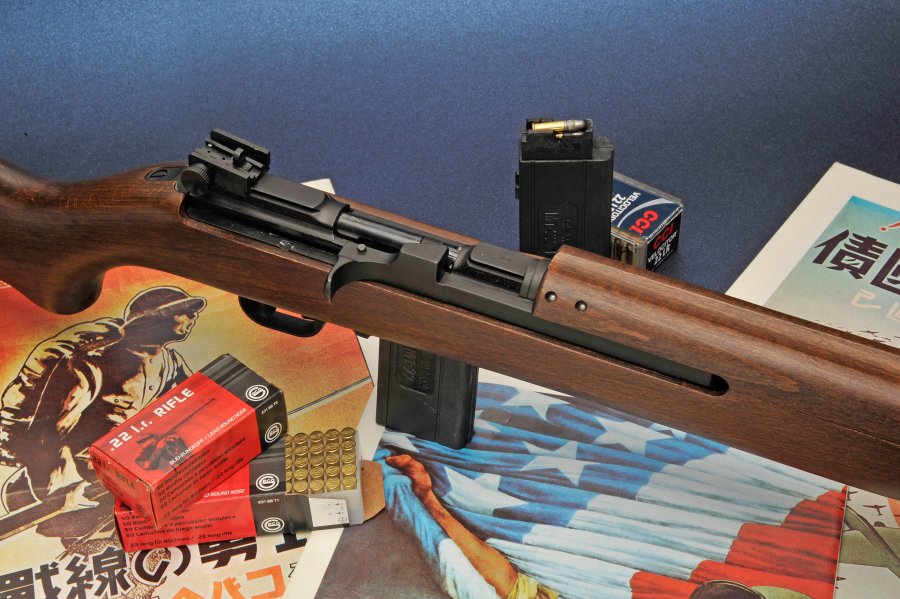
As of today, the M1 carbine is, or has been, issued and used by the Police and Military forces of around sixty countries.
Italy is between them: despite having the well-known Italian-based Beretta company tried to market a version of this carbine on its own, dubbed the P.30-M781, after the war (which was actually much more akin to an upscaled MAB machine-carbine and even used a double trigger for semi-automatic and full-autofire), the Italian government received about 146.863 U.S. M1 carbines from the American governments, mostly used by the Polizia di Stato (Italian National Police) for border patrol duties, and by the Carabinieri (Italian Gendarmerie) as a standard patrol rifle, replacing WW2-era muskeets, up until the Beretta PM-12 sub-machinegun was issued in full-scale halfway through the 1960s.
An increasingly limited, but otherwise steady, deployment of the M1 carbine with the Italian Law Enforcement continued even as far as during the 1980s; when these guns became too old and worn-out, too dangerous to fire, and even governmental ammunition stocks ran out, they were issued for riot/crowd control weapons: officers in anti-riot duties were issued with unloaded M1s, without a magazine at all, and trained to beat the hell out of rioters with the gun stock, sometimes even holding them from the barrel as a club! This of course led many of these M1 carbines to destruction; the fate of the M1 carbines issued to the Italian National Police and the Carabinieri, as well as to some artillery groups of the Italian Army and to the surveillance units of the Italian Air Force, is today mostly unknown to the general public.
Such an important piece of history of course deserved some degree of celebration, and while the American companies carry on its legacy by manufacturing brand new M1s for civilian sales, the Chiappa Firearms company − headquartered in the northern Italian town of Azzano Mella and operating out of a detached branch in Dayton (Ohio, USA) for the north-American markets − decided to pay a homage to the role that the M1 carbine played for the liberation of Italy from Nazism and Fascism, and later in the hands of Italian soldiers and Police officers. About two years ago, the Chiappa Firearms company launched the M1-22 semi-automatic carbine: a small, lightweight, accurate and funny rimfire plinking replica of the original design.
The Chiappa Firearms Company has, in fact, been on the cutting edge of the renewed interest for .22 plinkers, offering a wide array of practical, cheap, and extremely well-made rimfire versions of well-known pistol and rifles designs in the past years, starting from the M9-22 and M1911-22 pistols to the M4-type semi-automatic carbines and pistols, ending up to the recently-launched single-shot Little Badger model, conceptually and aesthetically patterned after some well-known Air Force survival rifles dating back to World War 2, the Korean war, and the Vietnam war.
Yeah, yeah, we know: some of you out there want to see the "real deal", the "big caliber" stuff, and some of you despise these small-caliber knockoffs.
As a matter of fact, we don't dislike them: they're well apt for a plethora of uses, including target practice, basic handling and marksmanship training for newbies and youngsters ("Appleseed", as they call it in America!), competition shooting, indoors plinking, and varmint hunt. They also have a wider market than their full-caliber "bigger brothers", being legal to own for civilians even in several tightly gun-controlled jurisdictions (the United Kingdom, Mexico, even Japan), where centerfire autoloaders are strictly regulated or outright banned; and they provide a huge advantage to shooters themselves: being cheaper to purchase, and cheaper to use given the low cost of ammunition, they allow for long training sessions at a bargain price, which is not something to take so easily given the current scarce availability of ammunition for some calibers out there.
And nowadays, most of these rimfire knockoffs of centerfire military-style rifles and carbines are so well-made that, had they been around back when these guns were issued to soldiers, governments and armies would have probably adopted them as training aids, like they were used to do back in the day. That's specifically the case for the Chiappa Firearms M1-22 model.
The Italian company did a very good job in maintaining the proportions from the original gun, not just retaining the original barrel lenght and overall lenght (45.7 centimetres and 89 centimetres overall), but also paying great attention to tolerances and compatibilities of several components.
So to speak: the frame and the stock of the Chiappa Firearms M1-22 carbine are coupled in the same way they were on the original M1 carbine, this meaning that the Chiappa M1-22 will readily fit any original M1, M1-A1, M2 or M3 carbine stock, no matter what model, and may also fit some of the more modern tactical-type stocks conceived and manufactured for the M1 carbine in the past years, such as the Choate stock and others.
The Chiappa Firearms M1-22 carbine may come factory-equipped with two different baseline stock variants: a wooden stock or a polymer stock.
In Europe, this last variant only comes in a light black color, while in the United States a local importer (LSI - Legacy Sports International, out of Reno, Nevada), who distributes the Chiappa Firearms M1-22 carbines as the Citadel M-1 .22 Carbine, offers three different stock versions.
Dubbed the Moonshine M-1 .22 Synthetic carbines, these are customized in collaboration with Moon Shine Attitude Attire, and come in three camouflage patterns developed by the MoonShine L/P company: Outshine, Harvest Moon and Muddy Girl.
Chiappa Firearms maintained itself as faithful as possible to the original even when manufacturing the metal parts and other components, although of course some were adapted to the company's typical manufacturing techniques.
The top portion of the handguard, providing protection for the barrel, can be removed and replaced − just like in the original M1 carbine − with other aftermarket M1 accessories, such as a ventilated metal barrel shroud or a MIL-STD-1913 Picatinny rail that will allow the installation of long eye relief optics, red-dot sights, and so on; 11mm attachment points for optical sights are however machined over the receiver.
The Chiappa Firearms M1-22 also retains the controls configuration of the original M1 carbine: it features a right side charging handle, while the safety lever and the magazine release button are located under the stock, on the right side, in front of the trigger group; more specifically, the mag release push-button is placed right behind the magwell, so that the shooter may push it with the left index finger (if right-handed) or with the right thumb (if left-handed) while grabbing the empty magazine for removal and replacement.
The two-positions safety lever can be operated by a right-handed shooter simply by moving the index finger from the trigger, and just like in the original, it will allow the gun to fire when turned to the rear and will block the trigger when switched to the front position.
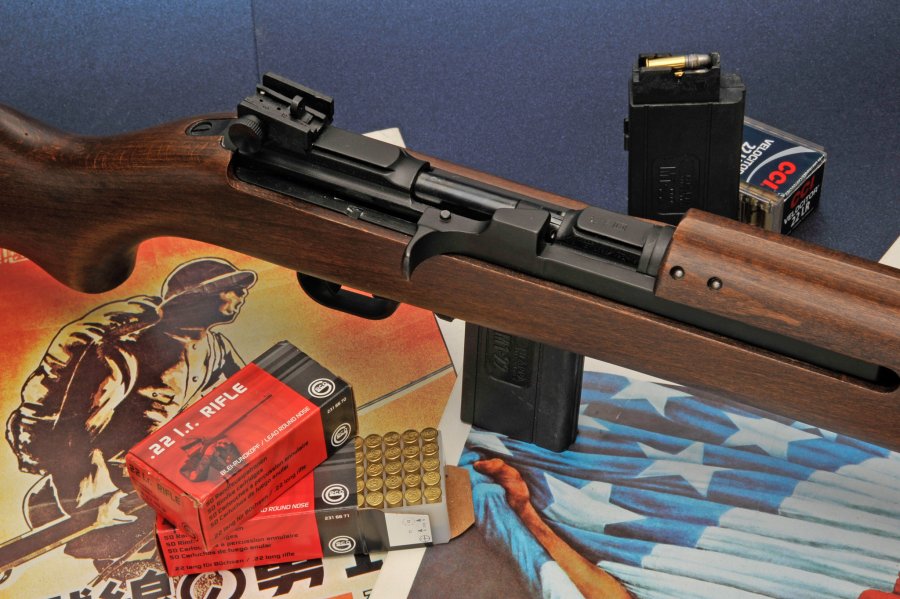
The barrels for the Chiappa Firearms' M1-22 carbines are cold-hammer forged out of 4140 stainless steel, and feature six right-handed grooves with one pitch in 16".
Most small components and moving parts, including the breechblock, are precision-machined out of stainless steel themselves; exception are the trigger − made out of aluminium alloy − the magazine catch release button and the safety switch, both made out of polymer; the receiver is instead precision-machined out of a single block of aluminium alloy.
Most of the technical differences that set the M1-22 apart from the original M1 carbine are to be found in the bolt group and working system: the M1-22 carbine isn't piston-driven but rather a straight blowback operated, and sports a precision-machined, spring-loaded rimfire-type striker.
The ejection and extractor work in a way that's much akin to the one of the M1 carbine counterpats, so that the spent cases ejection pattern on the two guns is pretty much alike.
The polymer sights of the Chiappa Firearms M1-22 carbine are a perfect replica of the iron sights found on the original M1 carbine: the front sight is fixed and protected by two side fins, while the rear sight is a typical 20th Century military-style peep-hole, and is adjustable for windage and elevation.
The rear sight on the Chiappa Firearms M1-22 carbine can be set for distances ranging from 100 to 300 metres − much like the original M1 carbine sights − although that seems quite excessive for this little gun.
Not that the carbine/caliber combo won't be able to reach that far, but the Chiappa Firearms' M1-22 carbine has been mostly conceived for indoor shooting or leisure plinking, and most of these shooting disciplines are seldom, if ever, practiced on distances ranging over 50 metres or so, even in outdoor ranges.
Nonetheless, the standard iron (well, polymer) sights of the Chiappa Firearms M1-22 carbine retain a quite good degree of accuracy; the exactly same sights are used on the already-mentioned Little Badger single-shot folding survival carbine, manufactured by Chiappa Firearms itself.
The M1-22 carbine sports a typical single-action trigger that's more or less faithful to the original. This component has been improved since the carbine was first launched: the early M1-22 models sometimes featured a somewhat craggy or sluggish trigger, but as far as we could verify, said drawback has been corrected and current production models feature a quite smooth trigger.
The entire trigger group is hosted in a reinforced polymer seat, which is attached to the aluminium receiver.
The detachable single-stack, 10-rounds magazine of the Chiappa M1-22 carbine is also made of polymer, and partially replicates the look of the original 15-rounds .30-caliber magazine found on the M1 carbines, although it's marked on the right side with the Chiappa Firearms logo.
Each M1-22 carbine comes equipped with two magazines; others are available as an aftermarket accessory, at a street price that ranges around 20.00€ in Europe and 30.00US$ in the United States.
Operational procedures for the Chiappa Firearms' M1-22 semi-automatic carbine are exactly the same as in the original M1-22: once the magazine is well inserted in its seat, in front of the trigger guard, the user should rack the cocking handle all the way back and release it to chamber the round; the handle itself is very light, and can be operated with one finger.
The safety also flicks in and out easily; the only drawback with the design, at least for modern canons, is that the military-style peep-hole sight, a typical feature on vintage service guns, is now largely perceived as obsolete by the youngest generations of shooters; as such, it may take some time for some of these users to get used to it, although they do allow the shooter to achieve some quite good results in accuracy.
As soon as the gun runs dry, the magazine elevator will dub as a last-round bolt open device, preventing the bolt from shut close. When we said that the Chiappa Firearms M1-22 could be used as a trainer rifle were the Armies still to use the original M1 carbine, we weren't babbling: the Chiappa's M1 rimfire plinker has been built to be so faithful to the original that even the field-strip and total disassembly procedures for cleaning or maintenance follow step by step these of the original .30-caliber M1 carbine.
As far as we could go with our live-fire tests, the M1-22 semi-automatic carbine is a good shooter, and in the hands of an average competent shooter it's already able to come out with quite good groups at the typical shooting distances for informal plinking, indoors range or outdoors practice.
It's definitely not a high-grade official competition gun, but it was never meant to be, otherwise it wouldn't go for such a low price: the wooden stock variants is sold at a manufacturer's suggested retail price of 467.50€ in Europe and 399.00US$ in the United States, while the MSRP for the black polymer stock version tops up about 386.50€ in Europe and 349.99US$ in the United States; the Citadel M-1 .22 variants with a Moonshine camo pattern, available only in the United States, go for 368.00US$ − which rise up to 499.00US$ for the versions with a threaded cap, which will readily accept silencers or sound suppressors. Perspective non-European or non-US buyers should check with their local authorized Chiappa distributor for availability and pricing.
All in all, we suggest all devoted shooters to purchase one: it's cheap, it's effective, it's definitely a must-have for a fun time at the range.
Chiappa Firearms M1-22
Technical specs
| Manufacturer | Armi Chiappa S.n.c. Via Milano, 2 25020 - Azzano Mella (BS) Italy Tel.: 030-9749065 Fax: 030-9749232 www.chiappafirearms.com |
| Model name | M1-22 |
| Type | Sporting carbine |
| Caliber | .22 Long Rifle |
| Operation | Semi-automatic, blowback-operated |
| Barrel | 457mm (17.99"), 6 grooves RH, 1 pitch in 16" |
| Firing system | Spring-loaded rimfire striker, built in the breechblock |
| Feeding | 10 rounds in single-stack polymer box magazine |
| Trigger | Single action only |
| Stock | Classic fixed stock, wooden or synthetic |
| Sights | M1 Carbine sights, polymer - fixed front post, adjustable rear for windage and elevation |
| Safeties | Manual trigger safety |
| Weight, empty | 2.5 Kg. (4 lbs., 8 oz.) |
| Overall lenght | 890mm (35") |
| Materials | Carbon steel for barrel and smaller metal parts; aluminium frame and trigger; polymer trigger housing, magazine catch and safety lever; wooden or polymer stock |
| Finish | Blued metal parts; wooden stock may be polished and polymer stock may come with camo finishes in some version |
| Price | 467.50€ / 399.00US$ (M1-22 "Wood") - 386.50€ / 349.99US$ (M1-22 "Black") |



